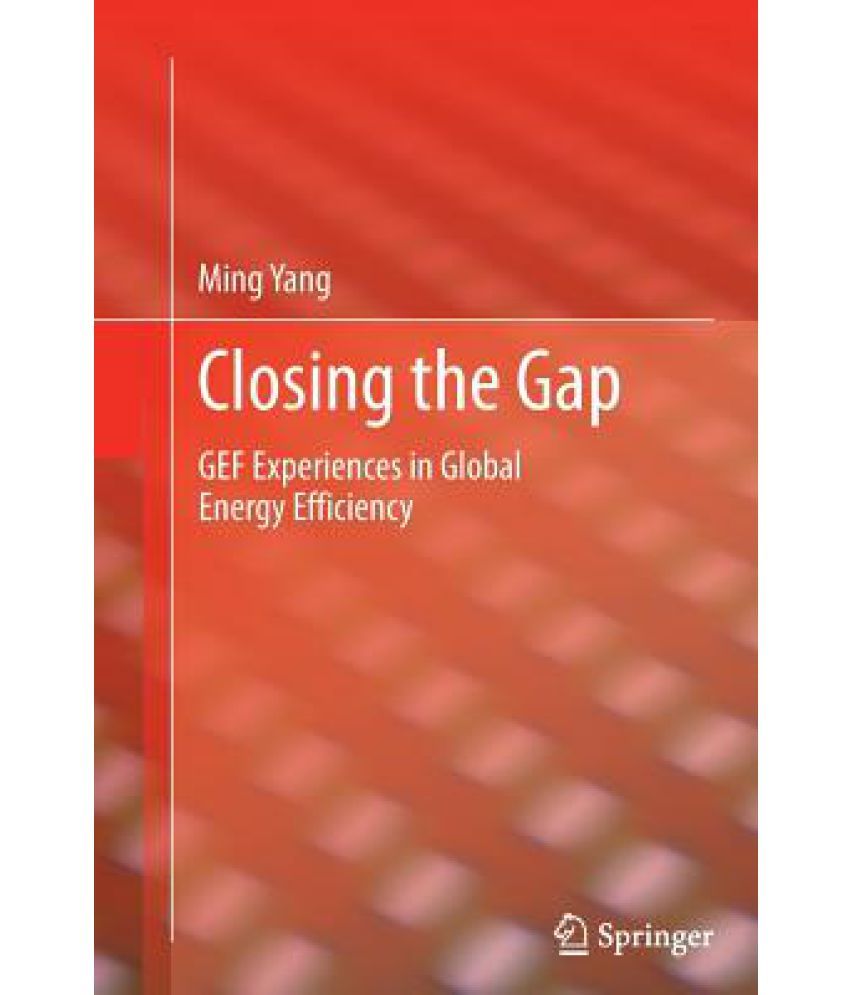Something went wrong. Please refresh the page and try again.
Something went wrong. Please refresh the page and try again.
Notifications can be turned off anytime from settings.
Item(s) Added To cart
Qty.
Something went wrong. Please refresh the page and try again.
Something went wrong. Please refresh the page and try again.
Exchange offer not applicable. New product price is lower than exchange product price
Please check the updated No Cost EMI details on the payment page
Exchange offer is not applicable with this product
Exchange Offer cannot be clubbed with Bajaj Finserv for this product
Product price & seller has been updated as per Bajaj Finserv EMI option
Please apply exchange offer again
Your item has been added to Shortlist.
View AllYour Item has been added to Shopping List
View AllSorry! Closing the Gap is sold out.


You will be notified when this product will be in stock
Brief Description
This ground-breaking analysis of the cost-effectiveness of investments in energy efficiency sets out a clear methodology for evaluating real-world projects in climate change mitigation and energy use, including the impact of multi-billion dollar programs.
Learn More about the Book
Energy efficiency plays and will continue to play an important role in the world to save energy and mitigate greenhouse gas(GHG) emissions. However, little is known on how much additional capital should be invested to ensure using energy efficiently as it should be, and very little is known which sub-areas, technologies, and countries shall achieve maximum greenhouse gasemissions mitigation per dollar of investment in energy efficiency worldwide.
Analyzing completed and slowly moving energy efficiency projectsby the Global Environment Facilityduring 1991-2010, Closing the Gap: GEF Experiences in Global Energy Efficiency evaluates impacts of multi-billion-dollar investments in the world energy efficiency. It covers the following areas:
1. Reviewing the world energy efficiency investment and disclosing the global energy efficiency gapand market barriersthat cause the gap;
2. Leveraging private funds with public funds and other resources in energy efficiency investments; using these funds in tangible and intangible asset investments;
3. Investment effectiveness in dollars per metric ton of CO2emissions mitigation in 10 energy efficiency sub-areas;
4. Major barriers causing failure and abandonments in energy efficiency investments;
5. Quantification of direct and indirect CO2emissions mitigations inside and outside a project boundary; and
6. Classification and estimation of CO2emissions mitigations from tangible and intangible asset investments.
Closing the Gap: GEF Experiences in Global Energy Efficiency can serve as a handbook for policymakers, project investors and managers, and project implementation practitioners in need of benchmarksin energy efficiency project investments for decision-making. It can also be used by students, researchers and other professionals in universities and research institutions in methodology development for evaluating energy efficiency projectsand programs.
"On the Back Cover
Energy efficiency plays and will continue to play an important role in the world to save energy and mitigate greenhouse gas(GHG) emissions. However, little is known on how much additional capital should be invested to ensure using energy efficiently as it should be, and very little is known which sub-areas, technologies, and countries shall achieve maximum greenhouse gasemissions mitigation per dollar of investment in energy efficiency worldwide.
Analyzing completed and slowly moving energy efficiency projectsby the Global Environment Facilityduring 1991-2010, Closing the Gap: GEF Experiences in Global Energy Efficiency evaluates impacts of multi-billion-dollar investments in the world energy efficiency. It covers the following areas:
1. Reviewing the world energy efficiency investment and disclosing the global energy efficiency gapand market barriersthat cause the gap;
2. Leveraging private funds with public funds and other resources in energy efficiency investments; using these funds in tangible and intangible asset investments;
3. Investment effectiveness in dollars per metric ton of CO2emissions mitigation in 10 energy efficiency sub-areas;
4. Major barriers causing failure and abandonments in energy efficiency investments;
5. Quantification of direct and indirect CO2emissions mitigations inside and outside a project boundary; and
6. Classification and estimation of CO2emissions mitigations from tangible and intangible asset investments.
Closing the Gap: GEF Experiences in Global Energy Efficiency can serve as a handbook for policymakers, project investors and managers, and project implementation practitioners in need of benchmarksin energy efficiency project investments for decision-making. It can also be used by students, researchers and other professionals in universities and research institutions in methodology development for evaluating energy efficiency projectsand programs.
"
The images represent actual product though color of the image and product may slightly differ.
Register now to get updates on promotions and
coupons. Or Download App